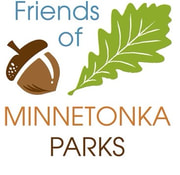Part 3 - Restoration and Ecology
Why don't we let nature take its course?
When there is a “do nothing” approach, especially when invasive plants have taken over a park, the ecosystem will continue to decline in quality. All living organisms, including bees, birds, butterflies, and mammals depend on a foundation of a diversity of native plants and intact habitat for survival. Without intervention and human stewardship, the parks would continue to decline and be stuck in a negative spiral of biodiversity loss with little benefit to humans or wildlife.
Why are you cutting down native trees and shrubs - red cedar, sumac, etc?
Historically Minnetonka was predominantly oak savanna and oak woodland plant communities. The plan is to restore many high priority areas of our parks in accordance with the Natural Resources Master Plan (NRMP) to these oak-dominated systems. Even though a plant is native, it is not always part of the target plant community and can negatively impact restoration goals by competing with the establishment of desired plants.
When you remove buckthorn, won't other invasive plants take its place?
Yes, unless there is proper management of the restoration post-buckthorn removal. When a diverse carpet of native perennials is established, invasives will have greater competition for space to grow. Volunteer stewards, staff, and contractors sow native seed in areas cleared of buckthorn to begin establishing these desirable perennial plants that will help compete with invasive plants and eventually provide habitat for pollinators, mammals, and birds.
The city has tried this before and buckthorn has just grown back. Will this be any different?
Ecological restoration science is a young field and new best management practices are always being refined based upon current science and successful restoration outcomes. Using this up-to-date information, there is a movement to a more comprehensive and coordinated activity city-wide including the hiring of staff specialists. In addition, volunteer stewards such as the Friends of Minnetonka Parks (FoMP) have adopted high priority areas for long-term vigilant maintenance to keep restoration goals on track and ensure successful outcomes.
Why is buckthorn such a problem to soil health?
Buckthorn causes many changes to oak woodlands and savannas. For example, buckthorn is capable of changing the nitrogen content of soil through the decomposition of its nitrogen-rich leaf litter. Excess nitrogen makes it more difficult for native species to grow, facilitates the growth of nitrogen loving weeds, and can cause pollution in our waterways. Buckthorn also shades out the perennial plants that once grew in these habitats. Without those plants holding the soil, soil erosion increases once buckthorn gets established. Both buckthorn and garlic mustard release chemicals into the soil from their seeds and/or roots preventing native seeds from germinating. With these soil changes along with increased competition from invasive plants, native plants, especially the perennials, will be lost. In buckthorn monocultures, the soil becomes bare and is extremely susceptible to erosion. Soil erosion impairs our streams and wetlands because it carries excess nutrients, pollution, and sediment.
